Analyzing Personal Skills and Career Prospects: A SWOT Analysis Report
VerifiedAdded on 2022/11/30
|16
|608
|75
Report
AI Summary
This report presents a personal SWOT analysis focusing on individual strengths, weaknesses, opportunities, and threats to aid in career development. The analysis identifies key strengths like communication skills, goal orientation, and optimism, while acknowledging weaknesses such as shyness and ...

PERSONAL PITCH
Paraphrase This Document
Need a fresh take? Get an instant paraphrase of this document with our AI Paraphraser
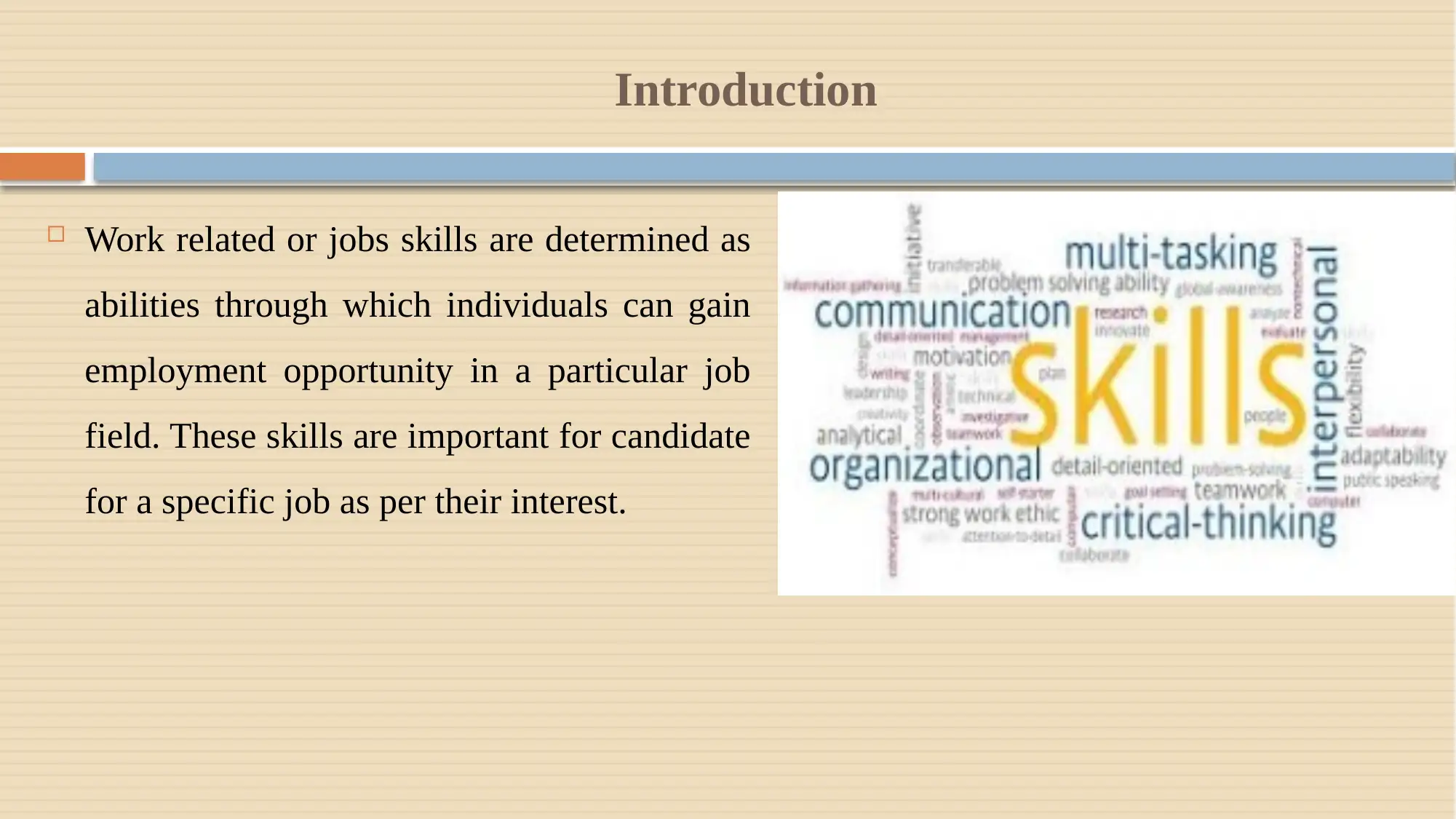
Introduction
Work related or jobs skills are determined as
abilities through which individuals can gain
employment opportunity in a particular job
field. These skills are important for candidate
for a specific job as per their interest.
Work related or jobs skills are determined as
abilities through which individuals can gain
employment opportunity in a particular job
field. These skills are important for candidate
for a specific job as per their interest.
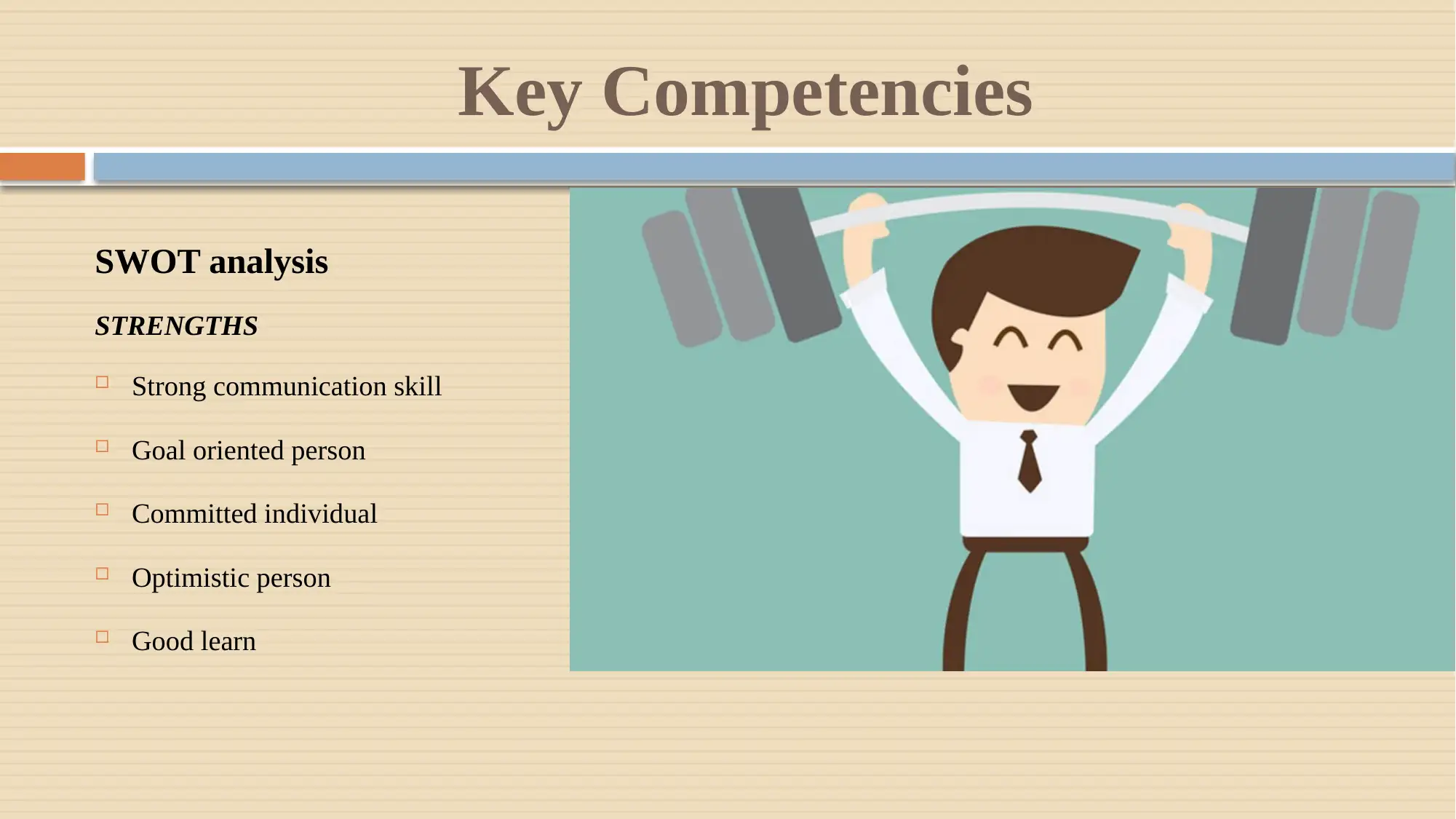
Key Competencies
SWOT analysis
STRENGTHS
Strong communication skill
Goal oriented person
Committed individual
Optimistic person
Good learn
SWOT analysis
STRENGTHS
Strong communication skill
Goal oriented person
Committed individual
Optimistic person
Good learn
⊘ This is a preview!⊘
Do you want full access?
Subscribe today to unlock all pages.

Trusted by 1+ million students worldwide
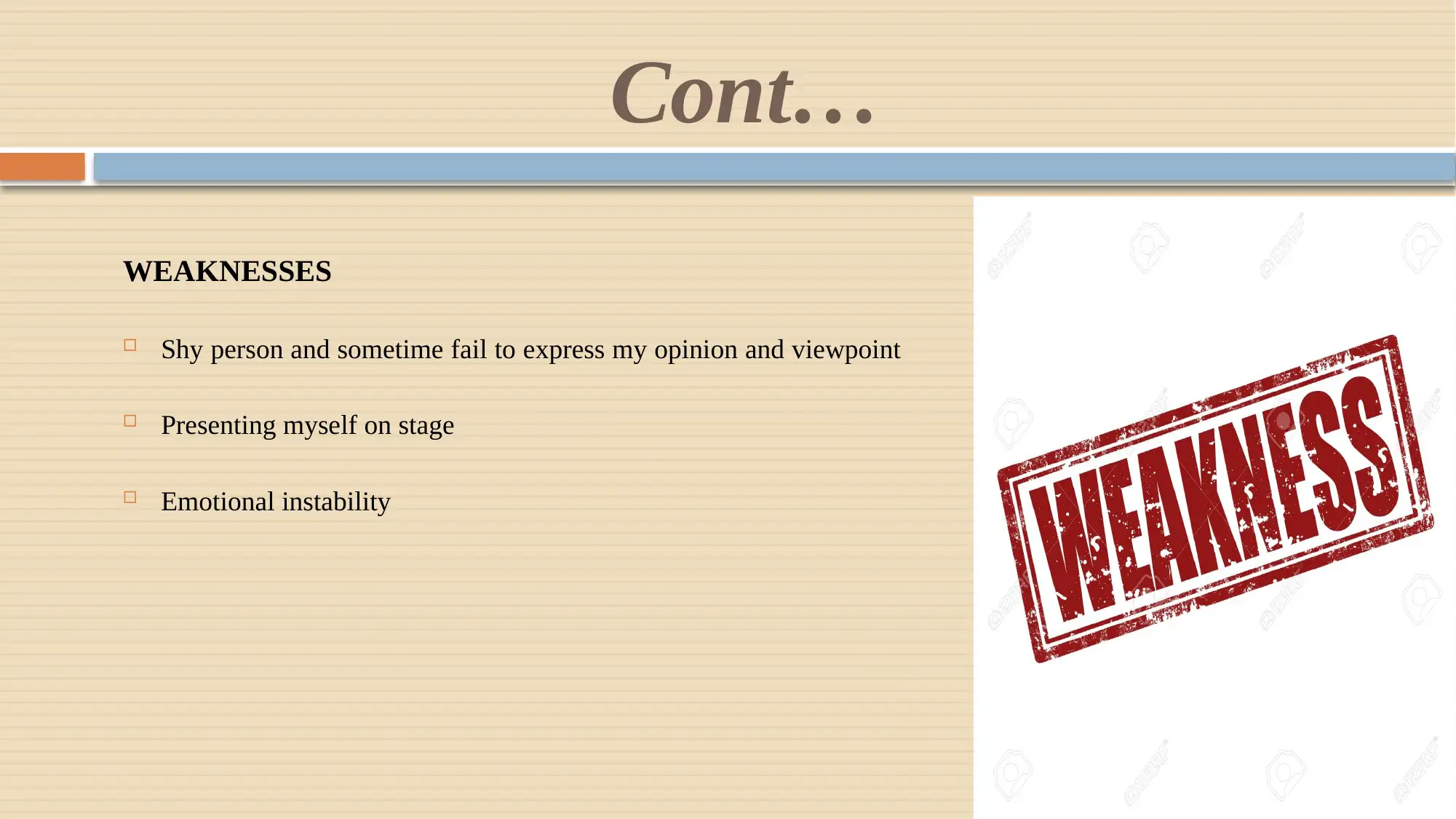
Cont…
WEAKNESSES
Shy person and sometime fail to express my opinion and viewpoint
Presenting myself on stage
Emotional instability
WEAKNESSES
Shy person and sometime fail to express my opinion and viewpoint
Presenting myself on stage
Emotional instability
Paraphrase This Document
Need a fresh take? Get an instant paraphrase of this document with our AI Paraphraser
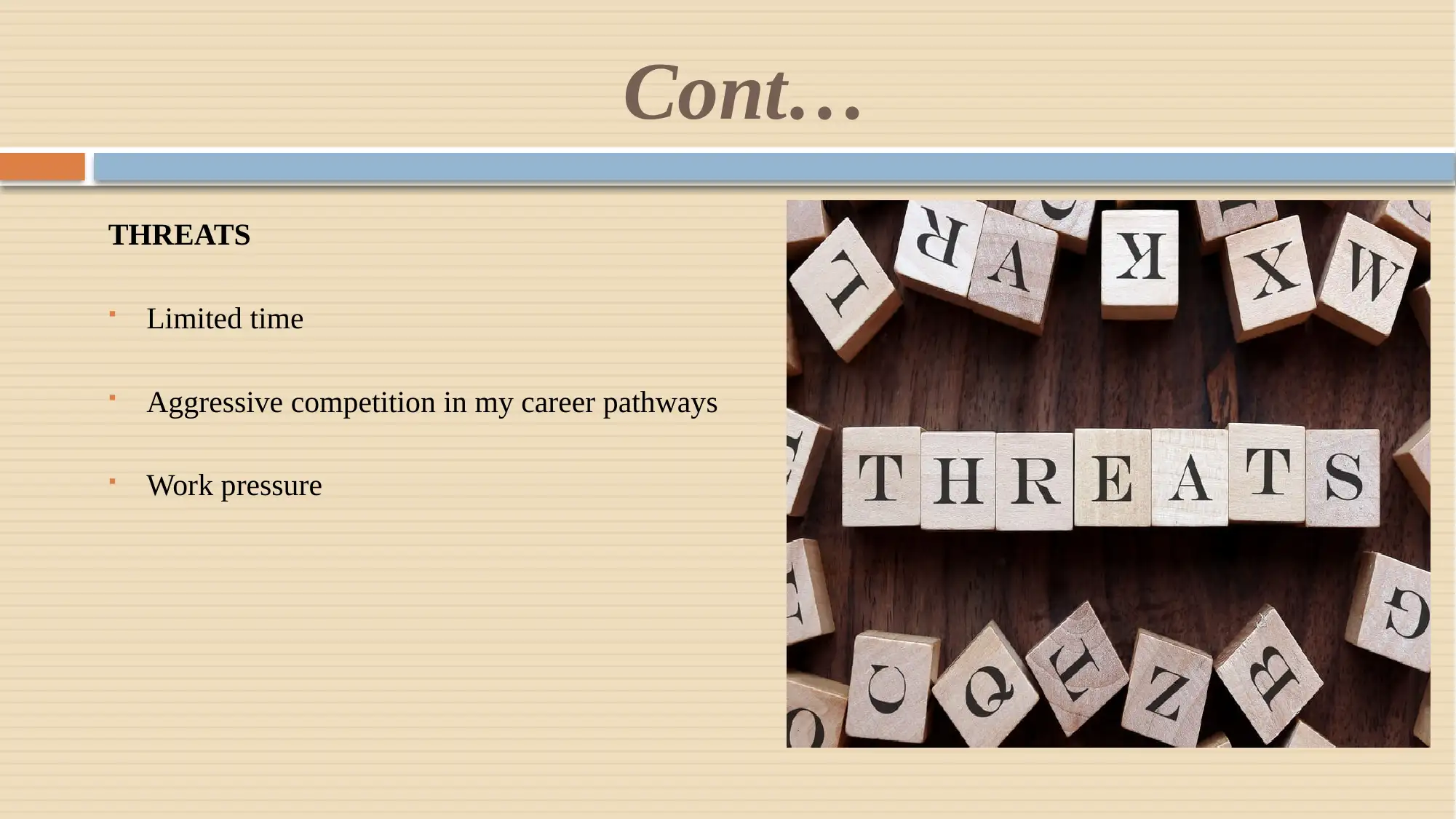
Cont…
THREATS
Limited time
Aggressive competition in my career pathways
Work pressure
THREATS
Limited time
Aggressive competition in my career pathways
Work pressure

Cont…
OPPORTUNITIES
Taking advantage of training
Enhance my learning skills
OPPORTUNITIES
Taking advantage of training
Enhance my learning skills
⊘ This is a preview!⊘
Do you want full access?
Subscribe today to unlock all pages.

Trusted by 1+ million students worldwide
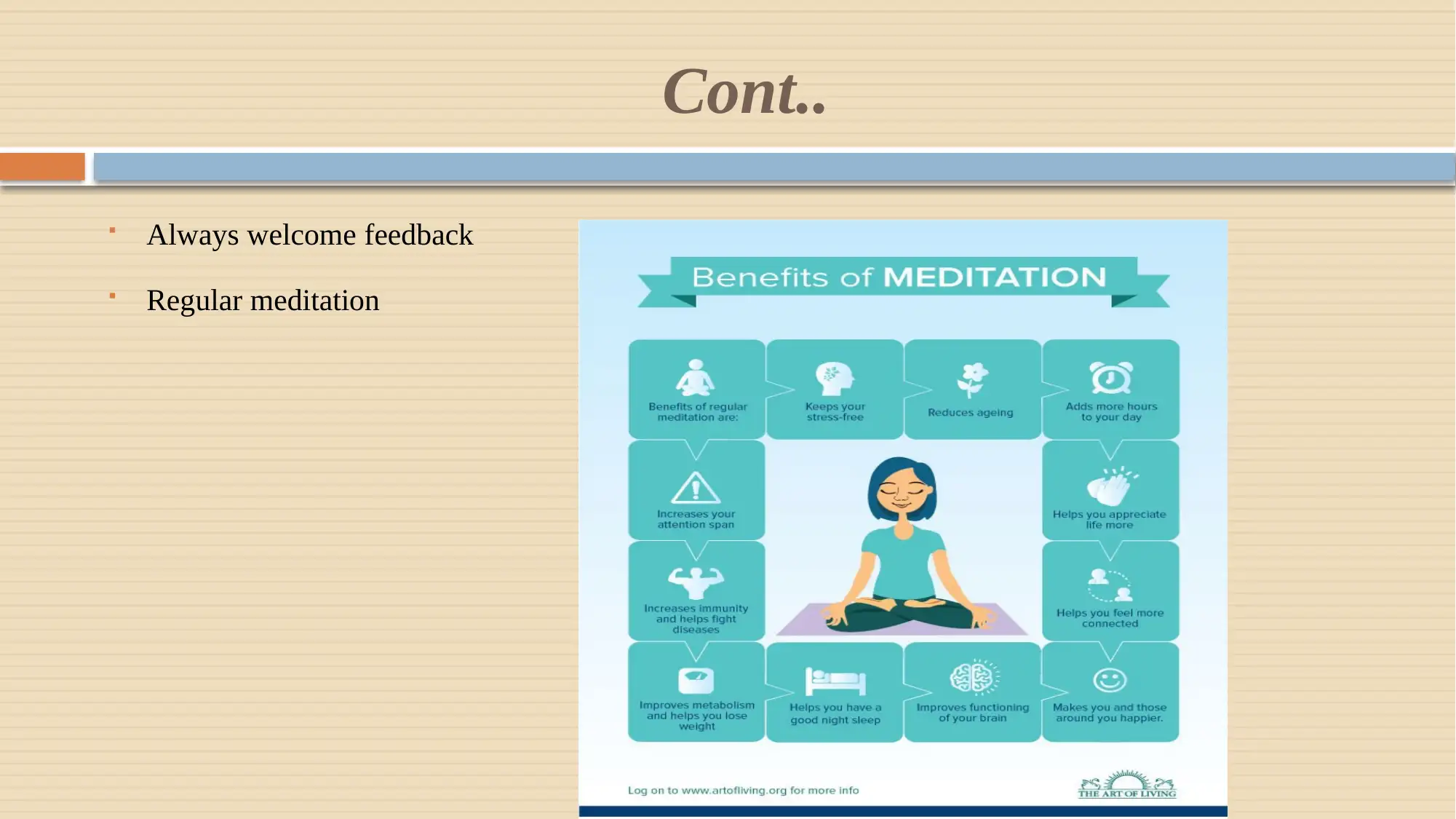
Cont..
Always welcome feedback
Regular meditation
Always welcome feedback
Regular meditation
Paraphrase This Document
Need a fresh take? Get an instant paraphrase of this document with our AI Paraphraser

Cont….
According to strengths, I have my professional growth opportunity as an HR manager as in this
organisation mainly seeks an individual who have strong communication skills can easily
communicate, ideas, organisational viewpoints and perception of top management to lower
management. Along with this, I am a goal oriented and committed individual and also have
optimistic behaviour, in which I always avoid negative feelings.
According to strengths, I have my professional growth opportunity as an HR manager as in this
organisation mainly seeks an individual who have strong communication skills can easily
communicate, ideas, organisational viewpoints and perception of top management to lower
management. Along with this, I am a goal oriented and committed individual and also have
optimistic behaviour, in which I always avoid negative feelings.
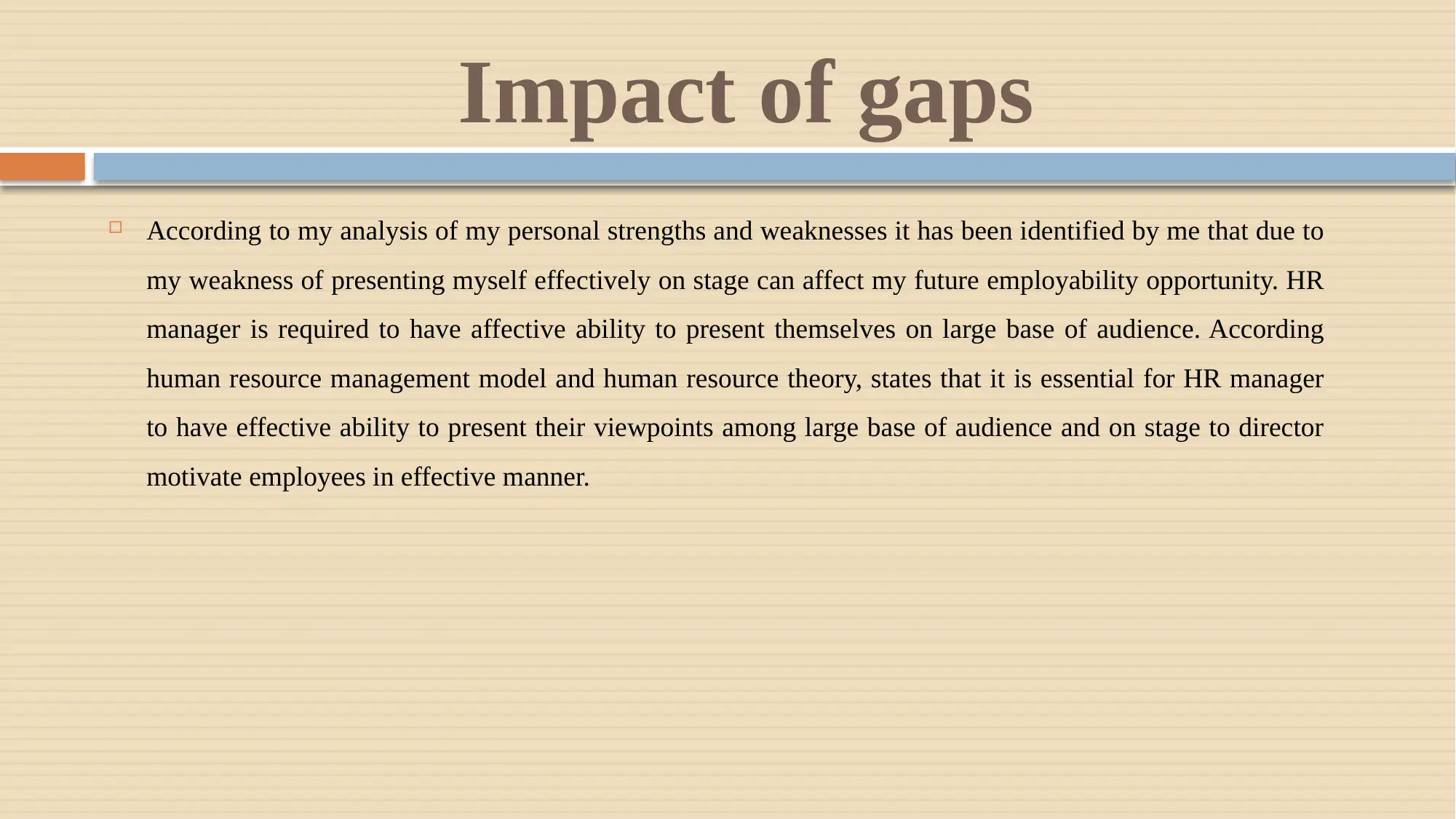
Impact of gaps
According to my analysis of my personal strengths and weaknesses it has been identified by me that due to
my weakness of presenting myself effectively on stage can affect my future employability opportunity. HR
manager is required to have affective ability to present themselves on large base of audience. According
human resource management model and human resource theory, states that it is essential for HR manager
to have effective ability to present their viewpoints among large base of audience and on stage to director
motivate employees in effective manner.
According to my analysis of my personal strengths and weaknesses it has been identified by me that due to
my weakness of presenting myself effectively on stage can affect my future employability opportunity. HR
manager is required to have affective ability to present themselves on large base of audience. According
human resource management model and human resource theory, states that it is essential for HR manager
to have effective ability to present their viewpoints among large base of audience and on stage to director
motivate employees in effective manner.
⊘ This is a preview!⊘
Do you want full access?
Subscribe today to unlock all pages.

Trusted by 1+ million students worldwide
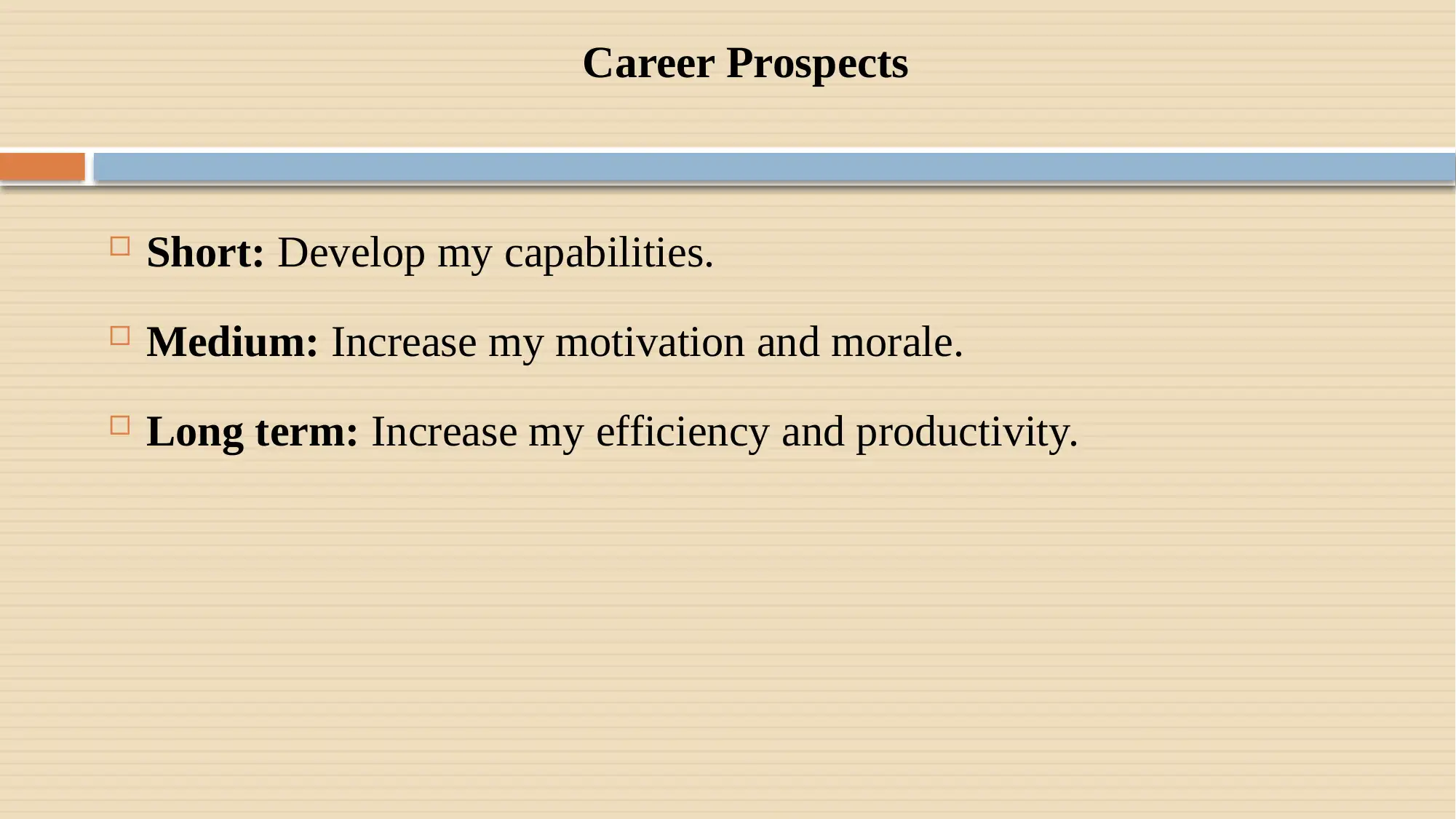
Career Prospects
Short: Develop my capabilities.
Medium: Increase my motivation and morale.
Long term: Increase my efficiency and productivity.
Short: Develop my capabilities.
Medium: Increase my motivation and morale.
Long term: Increase my efficiency and productivity.
Paraphrase This Document
Need a fresh take? Get an instant paraphrase of this document with our AI Paraphraser
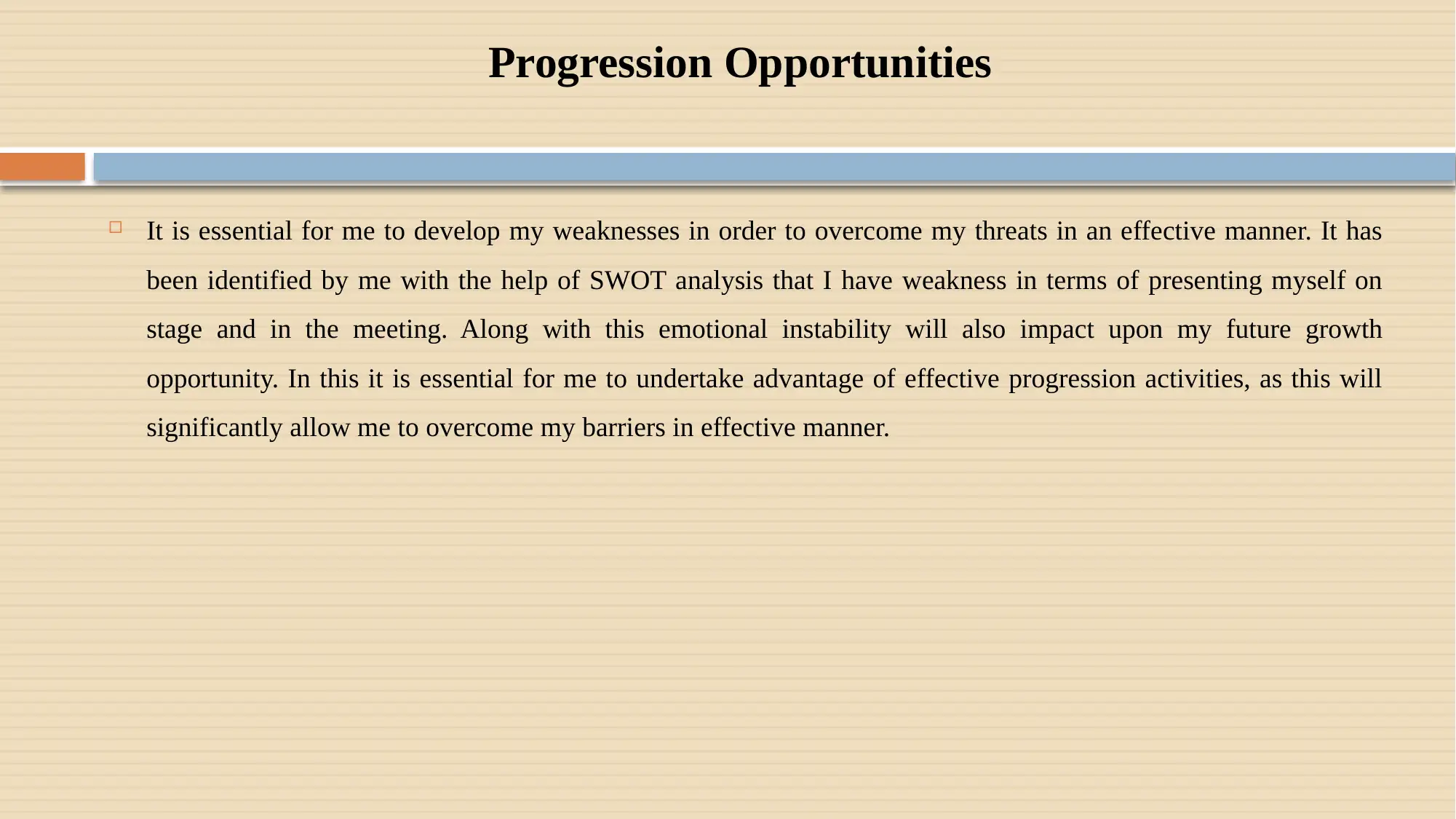
Progression Opportunities
It is essential for me to develop my weaknesses in order to overcome my threats in an effective manner. It has
been identified by me with the help of SWOT analysis that I have weakness in terms of presenting myself on
stage and in the meeting. Along with this emotional instability will also impact upon my future growth
opportunity. In this it is essential for me to undertake advantage of effective progression activities, as this will
significantly allow me to overcome my barriers in effective manner.
It is essential for me to develop my weaknesses in order to overcome my threats in an effective manner. It has
been identified by me with the help of SWOT analysis that I have weakness in terms of presenting myself on
stage and in the meeting. Along with this emotional instability will also impact upon my future growth
opportunity. In this it is essential for me to undertake advantage of effective progression activities, as this will
significantly allow me to overcome my barriers in effective manner.
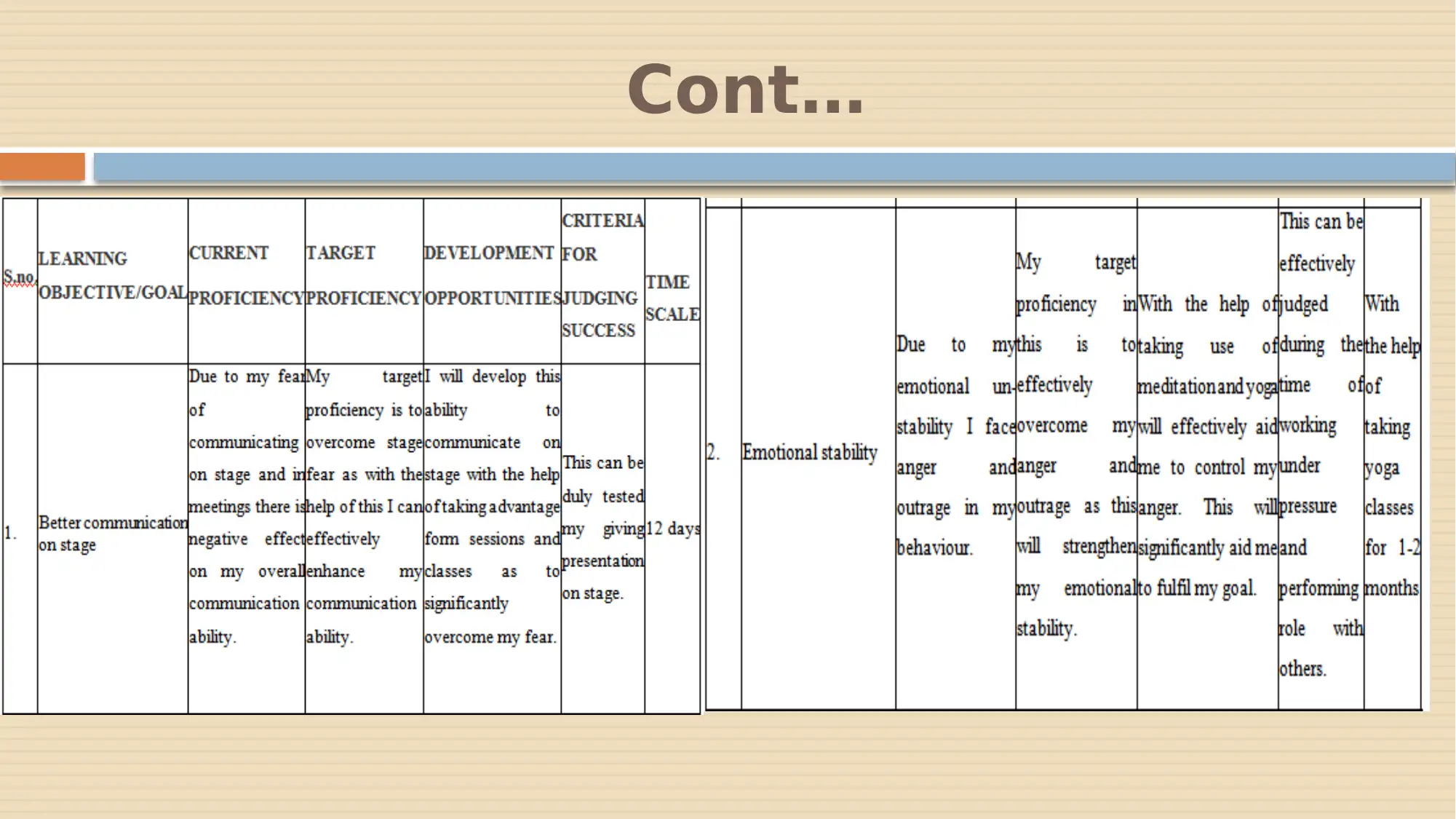
Cont…
⊘ This is a preview!⊘
Do you want full access?
Subscribe today to unlock all pages.

Trusted by 1+ million students worldwide
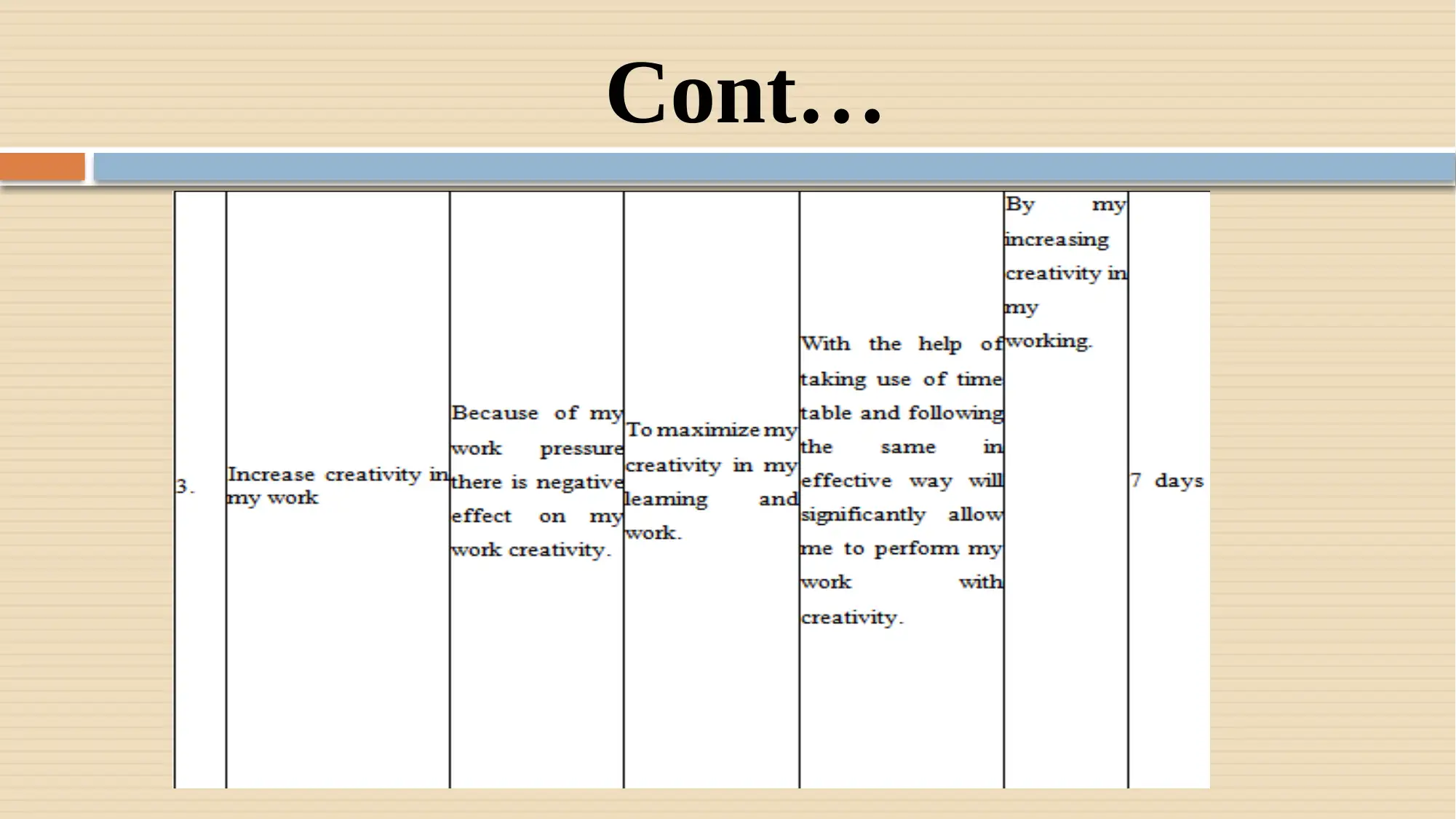
Cont…
Paraphrase This Document
Need a fresh take? Get an instant paraphrase of this document with our AI Paraphraser
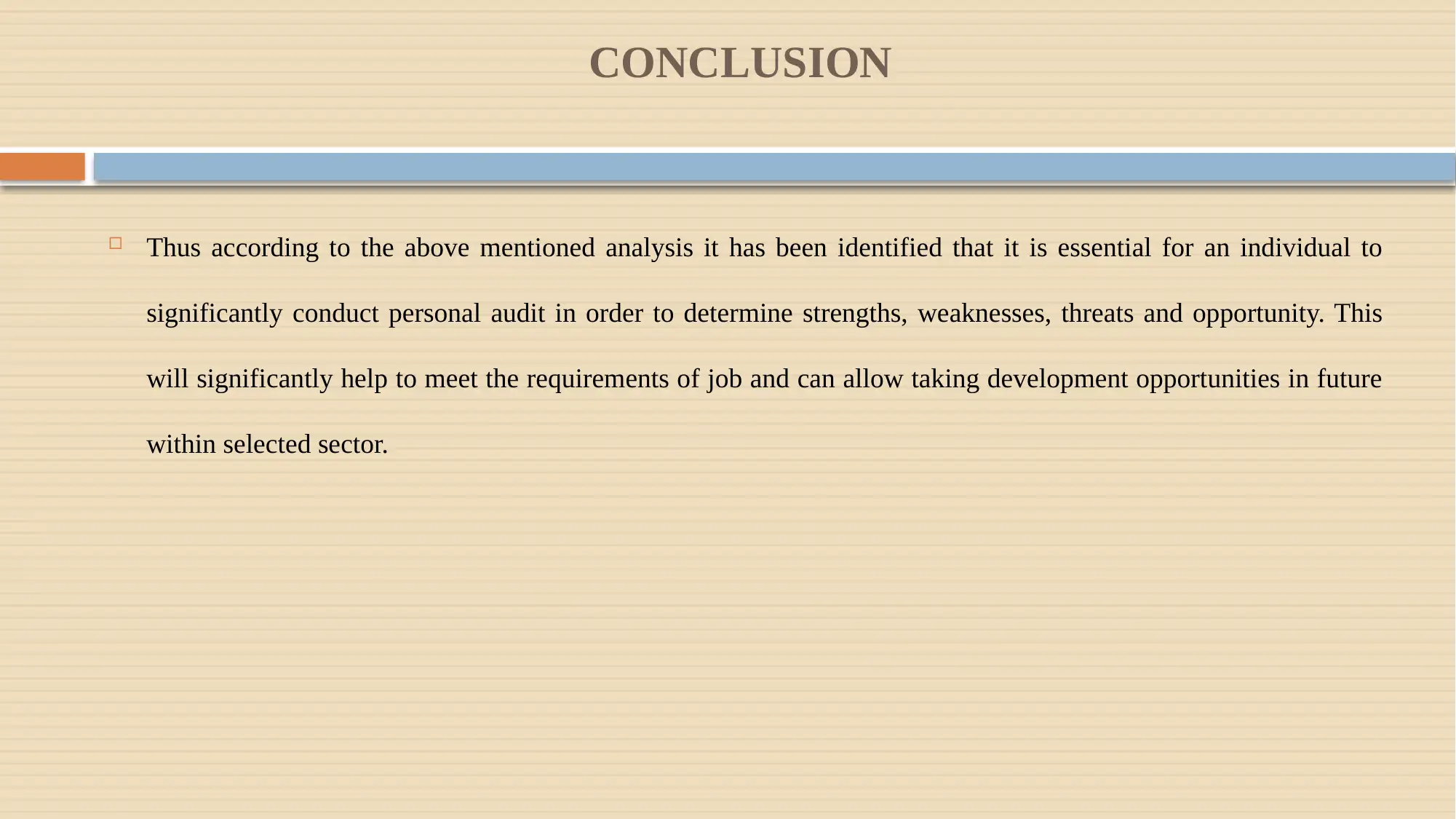
CONCLUSION
Thus according to the above mentioned analysis it has been identified that it is essential for an individual to
significantly conduct personal audit in order to determine strengths, weaknesses, threats and opportunity. This
will significantly help to meet the requirements of job and can allow taking development opportunities in future
within selected sector.
Thus according to the above mentioned analysis it has been identified that it is essential for an individual to
significantly conduct personal audit in order to determine strengths, weaknesses, threats and opportunity. This
will significantly help to meet the requirements of job and can allow taking development opportunities in future
within selected sector.
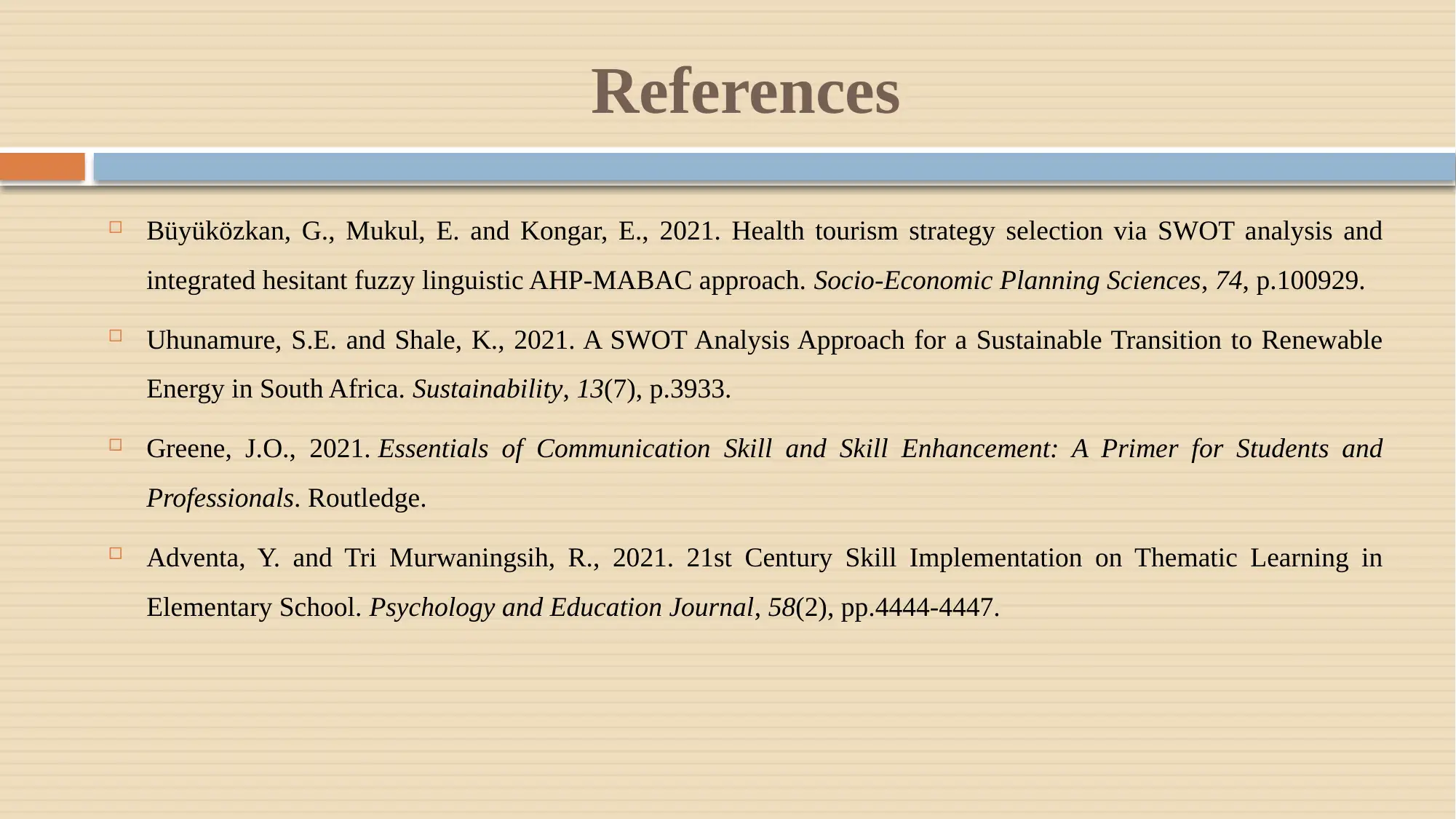
References
Büyüközkan, G., Mukul, E. and Kongar, E., 2021. Health tourism strategy selection via SWOT analysis and
integrated hesitant fuzzy linguistic AHP-MABAC approach. Socio-Economic Planning Sciences, 74, p.100929.
Uhunamure, S.E. and Shale, K., 2021. A SWOT Analysis Approach for a Sustainable Transition to Renewable
Energy in South Africa. Sustainability, 13(7), p.3933.
Greene, J.O., 2021. Essentials of Communication Skill and Skill Enhancement: A Primer for Students and
Professionals. Routledge.
Adventa, Y. and Tri Murwaningsih, R., 2021. 21st Century Skill Implementation on Thematic Learning in
Elementary School. Psychology and Education Journal, 58(2), pp.4444-4447.
Büyüközkan, G., Mukul, E. and Kongar, E., 2021. Health tourism strategy selection via SWOT analysis and
integrated hesitant fuzzy linguistic AHP-MABAC approach. Socio-Economic Planning Sciences, 74, p.100929.
Uhunamure, S.E. and Shale, K., 2021. A SWOT Analysis Approach for a Sustainable Transition to Renewable
Energy in South Africa. Sustainability, 13(7), p.3933.
Greene, J.O., 2021. Essentials of Communication Skill and Skill Enhancement: A Primer for Students and
Professionals. Routledge.
Adventa, Y. and Tri Murwaningsih, R., 2021. 21st Century Skill Implementation on Thematic Learning in
Elementary School. Psychology and Education Journal, 58(2), pp.4444-4447.
⊘ This is a preview!⊘
Do you want full access?
Subscribe today to unlock all pages.

Trusted by 1+ million students worldwide

1 out of 16
Related Documents
Your All-in-One AI-Powered Toolkit for Academic Success.
+13062052269
info@desklib.com
Available 24*7 on WhatsApp / Email
![[object Object]](/_next/static/media/star-bottom.7253800d.svg)
Unlock your academic potential
© 2024 | Zucol Services PVT LTD | All rights reserved.





